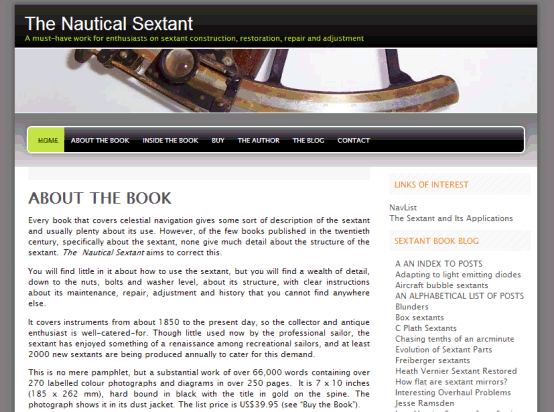
NavList:
A Community Devoted to the Preservation and Practice of Celestial Navigation and Other Methods of Traditional Wayfinding
From: Frank Reed
Date: 2024 Sep 15, 11:37 -0700
Dale L, last week you wrote:
"Blue cover Nautical Almanac? Indeed, it says so, the "Commercial Edition," right on the front cover! I never really understood the difference. I've never seen an orange covered one. [...] The Commercial Edition also has a nice assortment of interesting ads nicely grouped out of the way just inside the front and back covers."
Right. And the government-issue British Nautical Almanac, every bit as official as the US gov-issue Nautical Almanac, also has blue covers and has also had advertisements in it in various periods through the decades. The advertisements in old almanacs can be most of the fun in perusing those volumes today!
"Are tables for "Lunars" available anywhere?"
They're available online, of course. For example, see my website, ReedNavigation.com, under the "Apps & Tools" menu. As for printed lunar distance tables, that wouldn't make sense. There's no practical market for them. Conceivably they might be included in a modern printed nautical almanac a sort of antique "novelty" with "impractical" appeal...
It should also be remembered that lunar distances can be computed with very little effort (in the modern world) from accurate nautical almanac data (tenths of a minute of arc needed here!). The "lunar distance" from the Moon to, let's say, Jupiter is computed from the Moon's Dec, call it δ1, and Jupiter's Dec, δ2, as well as the difference in celestial (equatorial) longitude between the bodies, dλ, which could be a difference in SHA, or GHA, or LHA, or even the astronomers' RA. Take your pick. With those three quantities in hand, simultaneous for some chosen instant of UT, the LD is calculated from the standard spherical triangle relationship (the "great circle distance") via:
cos LD = sin δ1 sin δ2 + cos δ1 cos δ2 cos dλ.
That's it. Easy, right?
You also asked:
"Did Slocum use a Bowditch... or something else?"
For the lunar distance tables he would have used a recent edition of any current nautical almanac (lunar distances never repeat, so a Bowditch or similar would have been irrelevant as far as the data is concerned). Lunar distance tables were still printed in the 1890s in most nautical almanacs, which at that time included British and American almanacs, independently produced, as well as commercial almanacs with data derived from the official almanacs. By then the tables were almost completely obsolete at sea, but almanac publishers have always been highly conservative. Although Slocum famously shot one lunar near the Marquesas and wrote about it with puffed-up pride and a self-aggrandizing claim that he "corrected" some tabulated logarithms to get it right, he did not depend on lunars at all on his circum-navigation in the late 1890s. Lunars at sea were mostly over and done with by roughly 1850.
Frank Reed






